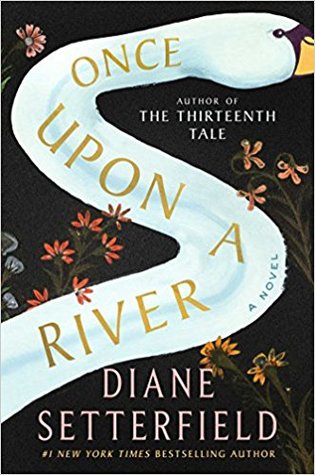Once upon a River Diane Setterfield (2018)
The river of the title is the Thames, meandering its way through southern England toward London and the sea. It’s a waterway freighted with history, mystery, and folklore. Diane Setterfield calls upon all these qualities of the Thames in this mystical, magical novel.
On a blustery night at the winter solstice, in an unnamed year in the nineteenth century, some inveterate storytellers are drinking at an inn called The Swan in a town called Radcot (an actual place in West Oxfordshire). Bursting in at the door comes a badly injured man carrying what seems to be a floppy doll. The man turns out to be a photographer whose boat crashed at a weir upstream. The doll turns out to be a young girl, about four years of age, who is at first thought to be dead but then revives at the hands of the local nurse/midwife, who is called to the scene.
The basis of the book is revealed in the first few chapters, but the unraveling of the tale takes 400 more pages. Who is the little girl? She does not speak, so she cannot reveal any information. Does she belong to the photographer? Is she the daughter of a local landowner—a child kidnapped two years previously and never found? Is she the sister of the parson’s housekeeper, a fearful woman with many reasons to be twitchy? Is she the step-granddaughter of a mixed-race farmer who lives nearby?
The narrative snakes back and forth among these possibilities, much like the flow of the River Thames, with language that evokes folk legend or fairy tale, though grounded in daily life. In keeping with this tone, the characters are drawn with broad strokes. The farmer is a most upright and kindly man; the nurse is highly skilled and compassionate. As foils, the evil characters at the fringes of the novel are truly nasty. For example, the farmer’s stepson is unrepentant as he pursues various unethical and criminal activities in the face of unrelenting kindness from the farmer.
Novelist Setterfield keeps coming back to those storytelling tipplers at The Swan. Their speculations about the strange little girl, and their embroideries upon the events of that winter solstice night, are like the Facebook posts of their era. As a year of seasons advances, most of the plot and sub-plot components are ultimately resolved, but readers are left with some of the same uncertainties that the storytellers at the inn have.
It’s a cracking good tale.



